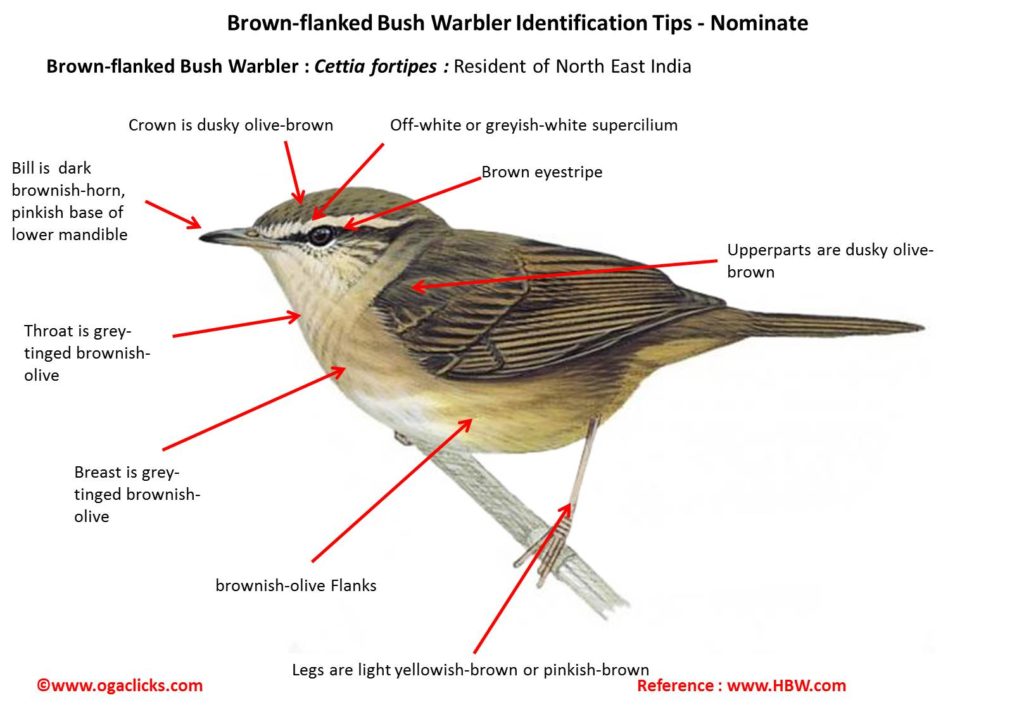
Brown-flanked Bush Warbler Cettia fortipes
Etymology:
Nominate:
- Cettia : Named after Cetti’s warbler, which itself isnamed after the Italian zoologist Francesco Cett
- Fortipes : Latin word fortis stout; pes
Sub-species:
- f. pallidus : Latin word for pale derived from Pallid
Distribution in India:
- Nominate – Resident of North East India
- f. pallidus– Resident of NW Himalayas
Description: Size of 11–12·5 cm; wt. of 8–11·5 g. It is a medium-sized bush-warbler with an undistinguished face pattern. The nominate race has narrow off-white or greyish-white supercilium, diffuse brown eyestripe. The crown and upperparts are dusky olive-brown, edges of flight-feathers are tinged more rufous-brown. It has grey-tinged brownish-olive throat and breast to belly, brownish-olive flanks; iris is dark; bill is dark brownish-horn, pinkish base of lower mandible. The legs are light yellowish-brown or pinkish-brown. Both the sexes are alike. The juvenile is very similar to adult, but has predominantly olive tone above, warmer brown edges of flight-feathers, yellowish wash on underparts. Race pallidus has colder brown upperparts than nominate, buffish supercilium, brownish-buff throat and breast, and paler buffish wash on flanks.
Habitat: It breeds in dense undergrowth, bamboo clumps and middle strata of temperate forests, also grassy edges and clearings, thickets on hillsides, bush-covered hillsides and ravines, scree slopes , edges of cultivations and in damper areas of valley bottoms. It is found from 1200 to 3300 m. In non-breeding season it is found in bushes and reedbeds along streams in foothills and edges of plains. It is found below 1200 m and down to 215 m.
Food Habits: It eats small invertebrates, larvae and eggs. It is secretive, shy and frequently elusive. It is active, and usually solitary. It constantly flicks wings.
Breeding habits: They breed in May–Aug. They are Monogamous. The nest is a ball or deep cup of dry grasses, leaves, plant fibres, moss and feathers, placed in low bush, vines or thick vegetation. They lay a clutch of 3–5 eggs.